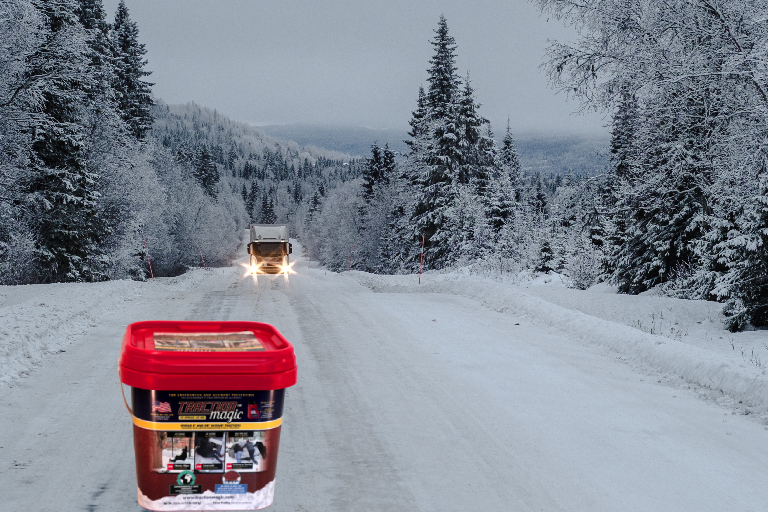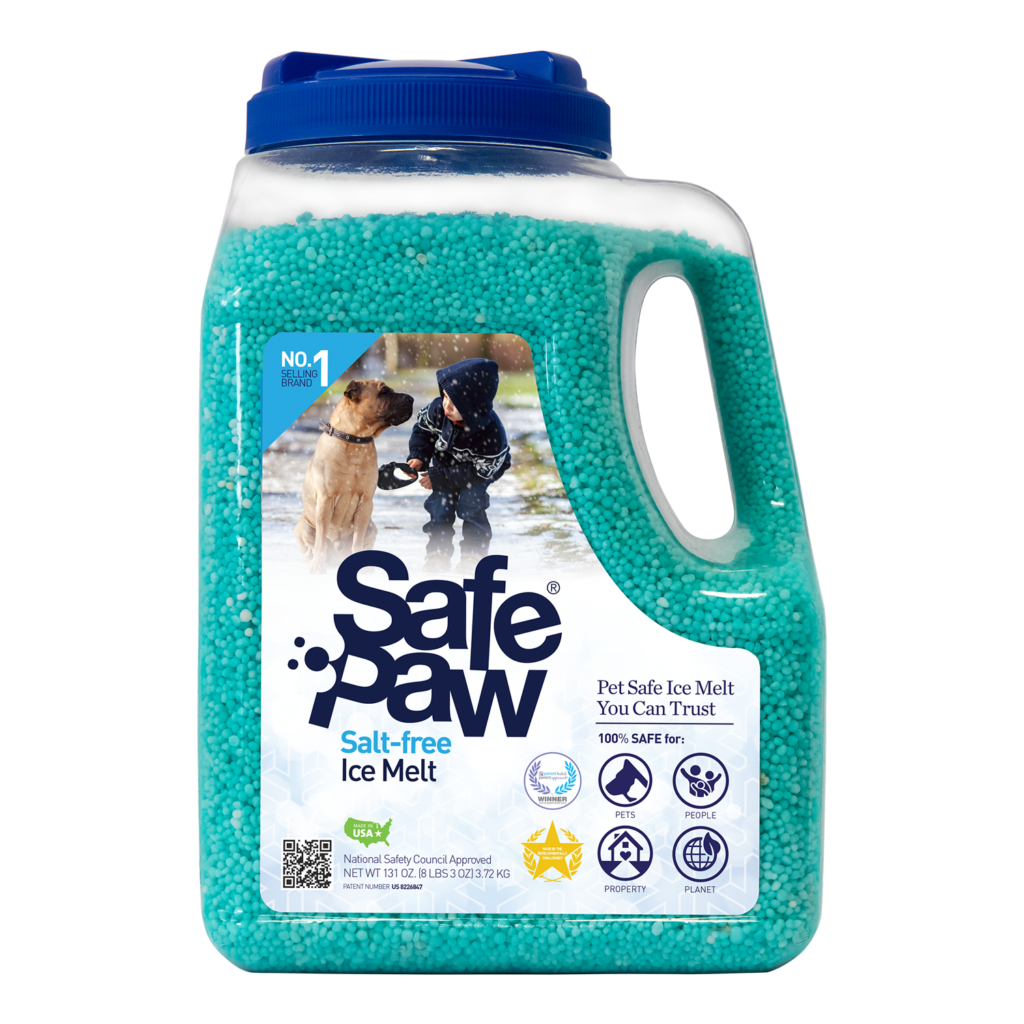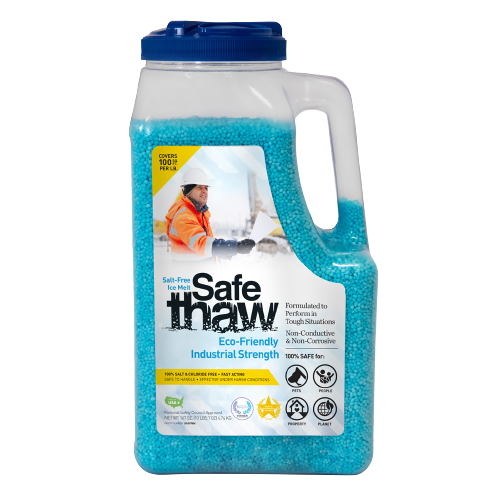The Science Behind Black Ice Formation

Winter presents many challenges, and among the most treacherous is the formation of black ice on roads and pavements. This thin, transparent ice layer is notorious for catching both drivers and pedestrians off-guard, leading to accidents and injuries. But how does black ice form? Dive into the science of how black ice forms and learn why it’s so deceptive.
Get ready for winter with Traction Magic instant grip on snow and ice
Understanding The Basics: What Is Black Ice?
Black ice isn’t actually black. The name stems from its near transparency, allowing the black road or pavement underneath to show through. It is a thin, smooth layer of ice that can form on any surface. Because of its clear nature, it’s often mistaken for a simple wet spot, making it particularly dangerous for those unaware of its presence.
Factors Contributing To The Formation Of Black Ice: How Does Black Ice Form
There’s a complex interplay of environmental conditions that come together for black ice to form. The process isn’t as straightforward as one might think, and several factors play a role.
- Temperature Fluctuations: The formation of black ice is most common during early morning or late evening hours when temperatures are typically at their lowest. When the temperature drops to the freezing point or just below after a day of rain or melting snow, the residual moisture on the roads can quickly freeze, forming black ice.
- Clear Skies and Calm Winds: On a clear night, the Earth’s surface loses its heat rapidly. Without clouds to act as a blanket, keeping some of the Earth’s heat from escaping to space, surfaces can cool down quickly. When there’s moisture present, it can freeze swiftly, leading to the formation of black ice. Calm winds further facilitate this process by ensuring the moisture remains undisturbed and evenly spread.
- Geographical Areas: Bridges and overpasses are notorious black ice spots. This is because air can flow underneath these structures, causing them to cool faster than regular roads. Likewise, areas with little to no sunlight, like tunnels or shaded roads, can also be black ice hotspots. Hope you have a better understanding on- how does black ice form.
Get ready for winter with Traction Magic instant grip on snow and ice
The Invisible Danger: Why Black Ice Is Hard To Spot
Black ice’s deceptive nature is primarily due to its thinness and the absence of trapped air bubbles. Regular ice often appears white or cloudy because of the numerous air bubbles trapped within. In the case of black ice, its formation process doesn’t usually trap air, leading to a clear, glass-like appearance.

Guarding Against The Hazard With ‘traction Magic’
Even with a clear understanding of how black ice forms, it remains a danger during the winter months. Preparedness is essential, especially when traveling or walking in areas prone to this icy menace.
Enter ‘Traction Magic’, a reliable solution for those slippery situations. Made from a blend of natural volcanic rock and seven other minerals, it provides immediate traction when sprinkled over icy surfaces. Whether you’re stepping out of your car onto an icy sidewalk or looking for a quick solution for your tires, ‘Traction Magic’ offers a non-corrosive, pet-safe, and environmentally-friendly solution.
Keeping a stash of ‘Traction Magic’ in your car or by your home’s entrance ensures that you’re always ready to tackle black ice, reducing the chances of unwanted slips and falls.
Black Ice vs Snow: Why One Is More Dangerous Than It Looks
At first glance, snow and black ice seem like equal winter hazards. But when comparing black ice vs snow, it becomes clear that the two present very different challenges. Snow, while slippery, is visible and often piled up, alerting drivers and pedestrians to take precautions. Black ice, on the other hand, is the sneaky villain—it blends perfectly with the road, offering no warning.
So, what is the difference between black ice and regular ice? Regular ice is often white or cloudy due to trapped air bubbles, forming from pooled or frozen water. Black ice forms in thin, smooth layers without air pockets, making it clear and nearly invisible. Snow gives visual clues—black ice does not.If you’re wondering, will there be black ice tonight after a clear sunset and dropping temperatures, the odds are high—especially if there’s residual moisture on the road or dew formation. Always check your local weather forecast, but more importantly, assume black ice is present whenever conditions are right.
Black Ice vs Snow: How to Drive When Roads Look Safe
Let’s talk tactics. The approach to how to drive with black ice differs from driving in snow. With snow, you adjust your speed, follow tire tracks, and keep a longer braking distance. With black ice, you take it further—slow down dramatically, avoid cruise control, and steer gently. The worst mistake is overcorrecting when traction is lost.
Traction agents like Traction Magic offer an edge here. Instead of guessing which surface is safer in the black ice vs snow debate, you can immediately improve tire grip without waiting for salt to work. This is especially helpful when navigating bridges or shaded roads where black ice is most likely to form. Remember: roads that look safe might not be safe. Just because the pavement looks dark and dry doesn’t mean it’s ice-free. That’s the deceptive power of black ice—versus the visible challenge of snow.
Get ready for winter with Traction Magic instant grip on snow and ice
Conclusion: Prepare Smarter, Not Just Harder
Now that you know how black ice forms and how it differs from snow, the solution becomes clear. Comparing black ice vs snow shows just how dangerous and unpredictable the former can be. Visibility is the game changer—what you can’t see is what might make you slip, spin, or worse. Equip yourself with the knowledge to recognize warning signs like temperature drops, clear skies, and damp pavement. But don’t stop there—carry tools like ice Traction Magic to gain reliable, instant grip. Whether you’re driving or walking, understanding and preparing for black ice can mean the difference between a safe journey and a hazardous one.
Other Ice Melt Products
Safe Paw
The Original and the #1 Pet and Child Safe Ice Melt for over 20 years. Guaranteed environmentally safe – will not harm waterways and sensitive wetlands. Safe Paw can change how winter affects our planet.

Safe Thaw
Imagine an ice melt you can put down and never worry about. It won’t harm pets, kids and your property. That’s Safe Thaw. Unlike anything else on the market, Ice and Snow Management You Can Trust.
